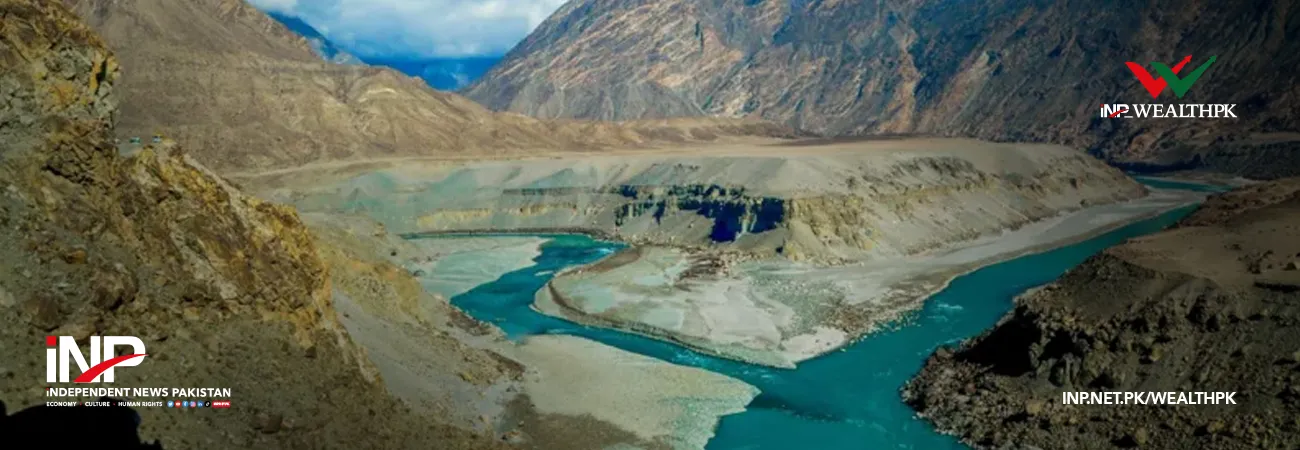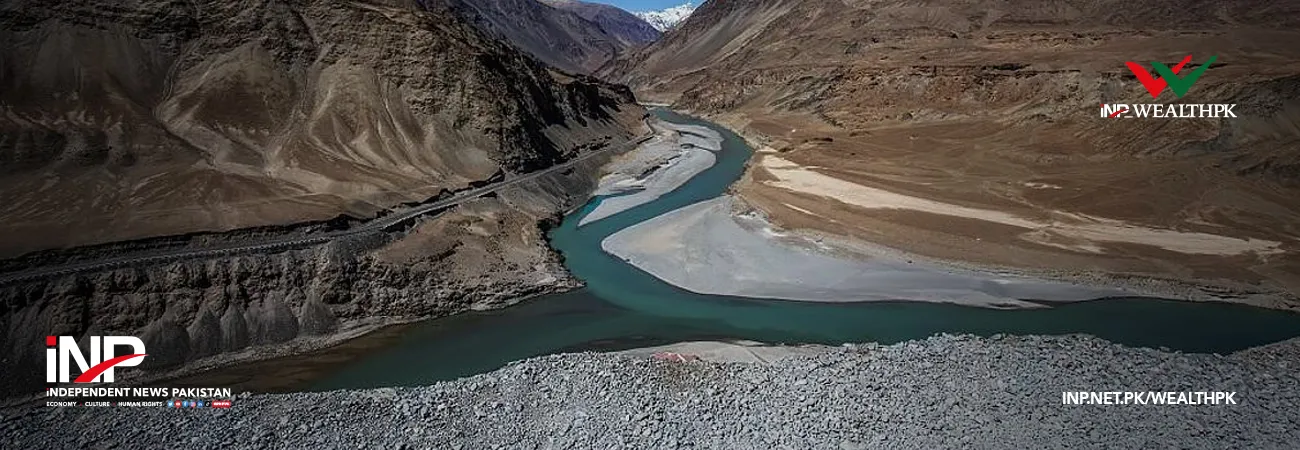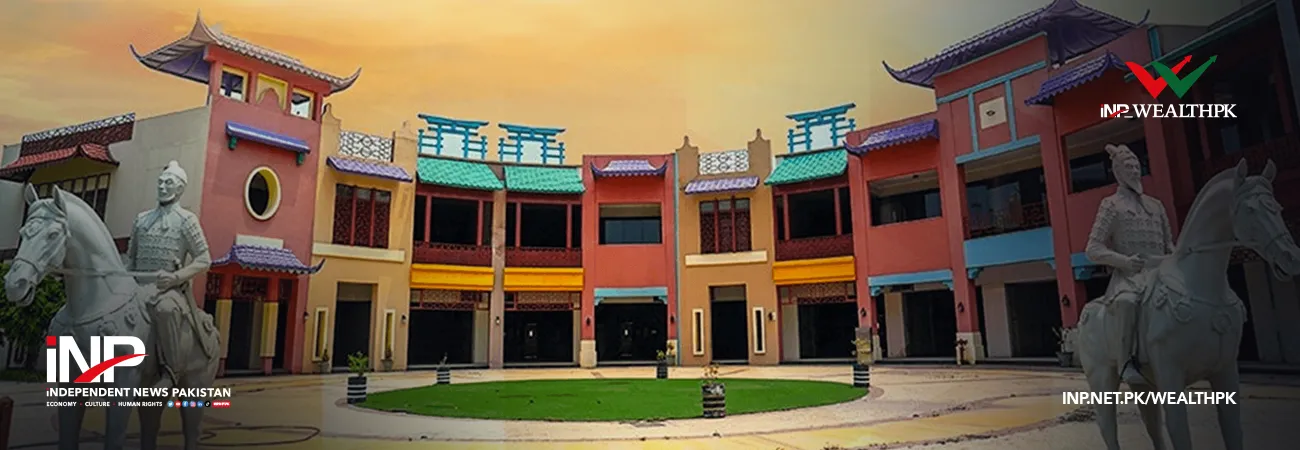INP-WealthPk
By Samia Khalid
ISLAMABAD, May 09 (INP-WealthPK): The second phase of the China-Pakistan Economic Corridor (CPEC) is set to accelerate socio-economic development in Pakistan.
The official launch of CPEC about seven years ago has taken the seven-decade-long relationship between Islamabad and Beijing to a new level, enhancing their strategic partnership and cooperation in almost every field.
 Through Chinese investment and the transfer of technology, the CPEC Phase-II aims to accelerate socioeconomic development in Pakistan by bringing industrial, technological, and agricultural revolutions to the region.
The second phase of the bilateral framework agreement focuses on poverty alleviation through agriculture and industrial cooperation.
The two countries have formed new Joint Working Groups (JWGs) for investment and cooperation in science and technology, information technology and agriculture.
The CPEC vision for Pakistan is to fully exploit the country’s demographic and natural endowment by expanding its industrial capacity through the creation of new industrial clusters, while balancing regional socioeconomic development with domestic peace and stability. The vision is to elevate the status of South Asian and Central Asian countries in the global economy, and to promote regional economic integration through stable trade growth.
The CPEC’s multiple societal advantages include increased access to markets, educational networks, and social connections; the bridging of social divides and prejudices; and, most crucially, the alleviation of social exclusion.
The Technical Vocational Institute of Gwadar is the first-ever modern vocational and technical training institute being built in the port city with Chinese funding. The institute is expected to accommodate 256 trainees at a time, and provide training opportunities to at least 1,000 people every year. This project will enhance the skills of the local population to participate in the growth of the city. The skilled manpower will meet the requirements of the Gwadar Port Free Zone, Export Processing Zone and other industrial and port-related projects.
The Pak-China Friendship Hospital being built under CPEC is expected to be completed by December 2022 at a cost of $100 million. The Chinese-funded medical facility spreads over 68 acres of land. On its completion, the hospital will provide not only better healthcare but also jobs to locals.
According to the CPEC Authority, China has also invested heavily in a number of other socioeconomic development projects in the country. It is expected that the CPEC will attract more investment to the country, particularly in its social sector, in the coming years.
The CPEC’s first phase focused on developing collaborative energy and transport infrastructure, such as the investments in construction of power plants, the Gwadar deep-sea port, highways, railways, and pipelines. These projects have directly created more than 75,000 jobs in Pakistan.
The CPEC’s long-term plan hinges on promoting industrial cooperation in Pakistan, particularly through the development of nine special economic zones (SEZs) to expand mutually beneficial regional trade and economic linkages.
Industrial cooperation is an important component of the Phase-II of CPEC. The nine SEZs have been planned under the SEZ Act 2012, which was amended in 2015 to cover the modalities and incentives offered to such zones.
The four priority SEZs are Rashakai SEZ in Khyber Pakhtunkhwa, Allama Iqbal Industrial City (AIIC) in Punjab, Dhabeji SEZ in Sindh and Bostan SEZ in Balochistan. The government is making efforts to ensure a plug-and-play environment for investors in these zones, which provide regionally competitive incentives such as a 10-year income tax exemption and a duty-free import of capital goods. These SEZs are expected to generate roughly 475,000 direct and one million indirect jobs.
The socioeconomic development under CPEC is in line with Pakistan’s efforts to bring major improvements in the lives of people from underdeveloped areas.
Through Chinese investment and the transfer of technology, the CPEC Phase-II aims to accelerate socioeconomic development in Pakistan by bringing industrial, technological, and agricultural revolutions to the region.
The second phase of the bilateral framework agreement focuses on poverty alleviation through agriculture and industrial cooperation.
The two countries have formed new Joint Working Groups (JWGs) for investment and cooperation in science and technology, information technology and agriculture.
The CPEC vision for Pakistan is to fully exploit the country’s demographic and natural endowment by expanding its industrial capacity through the creation of new industrial clusters, while balancing regional socioeconomic development with domestic peace and stability. The vision is to elevate the status of South Asian and Central Asian countries in the global economy, and to promote regional economic integration through stable trade growth.
The CPEC’s multiple societal advantages include increased access to markets, educational networks, and social connections; the bridging of social divides and prejudices; and, most crucially, the alleviation of social exclusion.
The Technical Vocational Institute of Gwadar is the first-ever modern vocational and technical training institute being built in the port city with Chinese funding. The institute is expected to accommodate 256 trainees at a time, and provide training opportunities to at least 1,000 people every year. This project will enhance the skills of the local population to participate in the growth of the city. The skilled manpower will meet the requirements of the Gwadar Port Free Zone, Export Processing Zone and other industrial and port-related projects.
The Pak-China Friendship Hospital being built under CPEC is expected to be completed by December 2022 at a cost of $100 million. The Chinese-funded medical facility spreads over 68 acres of land. On its completion, the hospital will provide not only better healthcare but also jobs to locals.
According to the CPEC Authority, China has also invested heavily in a number of other socioeconomic development projects in the country. It is expected that the CPEC will attract more investment to the country, particularly in its social sector, in the coming years.
The CPEC’s first phase focused on developing collaborative energy and transport infrastructure, such as the investments in construction of power plants, the Gwadar deep-sea port, highways, railways, and pipelines. These projects have directly created more than 75,000 jobs in Pakistan.
The CPEC’s long-term plan hinges on promoting industrial cooperation in Pakistan, particularly through the development of nine special economic zones (SEZs) to expand mutually beneficial regional trade and economic linkages.
Industrial cooperation is an important component of the Phase-II of CPEC. The nine SEZs have been planned under the SEZ Act 2012, which was amended in 2015 to cover the modalities and incentives offered to such zones.
The four priority SEZs are Rashakai SEZ in Khyber Pakhtunkhwa, Allama Iqbal Industrial City (AIIC) in Punjab, Dhabeji SEZ in Sindh and Bostan SEZ in Balochistan. The government is making efforts to ensure a plug-and-play environment for investors in these zones, which provide regionally competitive incentives such as a 10-year income tax exemption and a duty-free import of capital goods. These SEZs are expected to generate roughly 475,000 direct and one million indirect jobs.
The socioeconomic development under CPEC is in line with Pakistan’s efforts to bring major improvements in the lives of people from underdeveloped areas.













